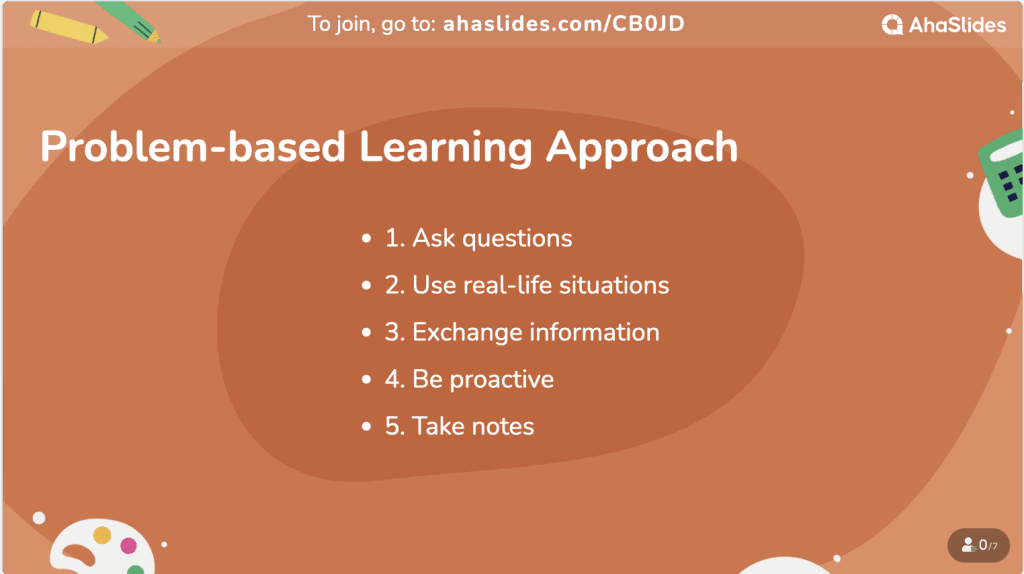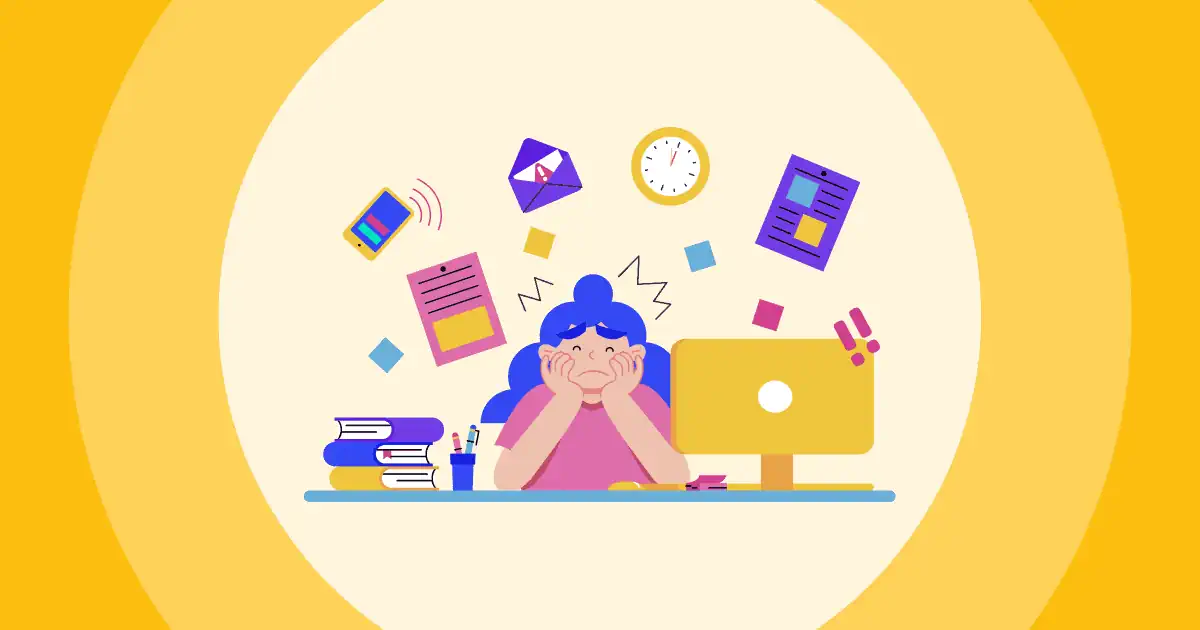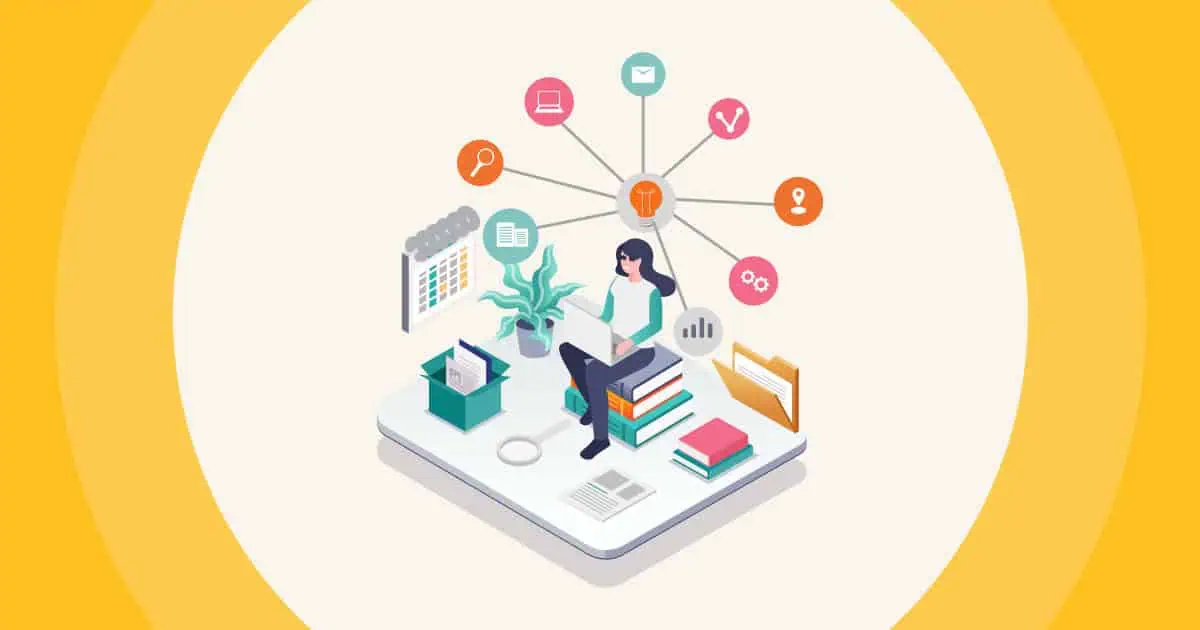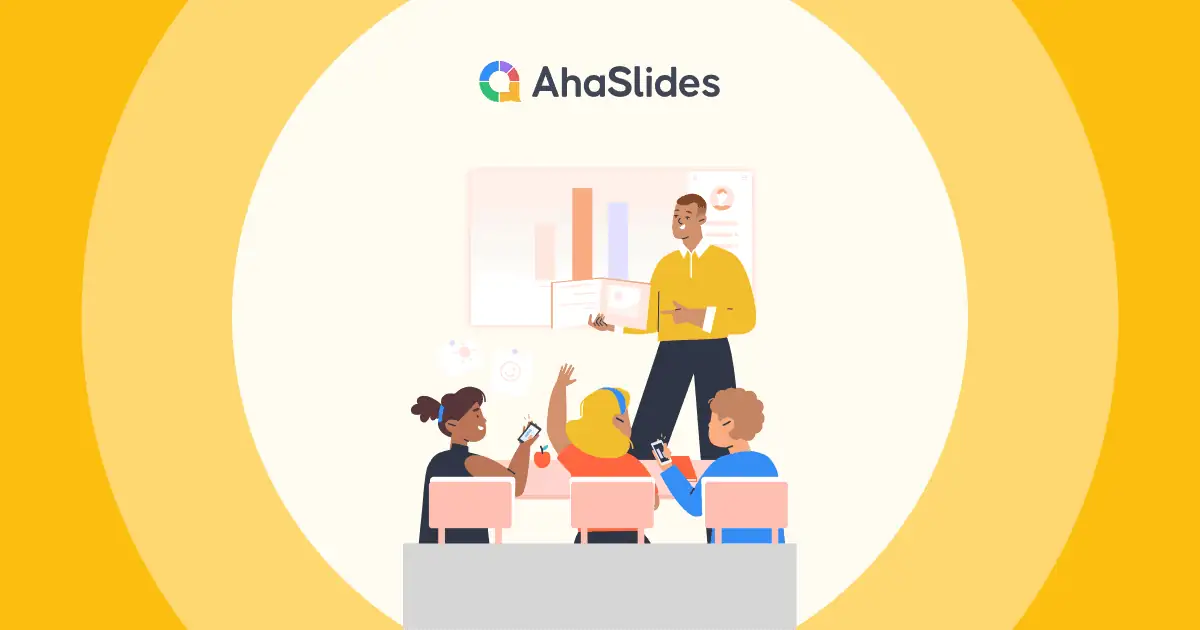Teaching methods have evolved continuously over the years to equip students with the best competencies to tackle real challenges in the modern world. This is why the problem-based learning method is widely utilized in teaching to ensure students practice critical thinking and analytical skills in solving problems.
So, what is problem-based learning? Here is an overview of this method, its concept, examples, and tips for productive outcomes.
Table of Contents
- What is Problem-Based Learning (PBL)?
- What are the Five Key Features of Problem-based Learning?
- Why is Problem-based Learning Important?
- How to Apply Problem-based Learning
- What are Examples of Problem-Based Learning?
- Key Takeaways
- Frequently Asked Questions
What is Problem-Based Learning (PBL)?
Problem-based learning is a learning method that requires students to work on real problems that are currently being applied by many universities. Students will be divided into small groups to collaborate on solving problems under the supervision of teachers.
This learning method originates from a medical school, with the goal of helping students apply knowledge and theory from books to solve real-life cases given in the classroom. Teachers are no longer in a teaching position but have moved to a supervisory position and only participate when absolutely necessary.
What are the Five Key Features of Problem-based Learning?
Problem-based learning aims to prepare students not only with knowledge but also with the ability to apply that knowledge to solve real-world challenges, making it a valuable pedagogical approach in a variety of fields and disciplines.
Here is a short description of problem-based learning, which is characterized by several key features:
- Authentic Problems: It presents students with problems that reflect real-world situations or challenges, making the learning experience more relevant and practical.
- Active Learning: Instead of passive listening or memorization, students actively engage with the problem, which encourages critical thinking and problem-solving skills.
- Self-Directed Learning: It promotes self-directed learning, where students take responsibility for their own learning process. They research, gather information, and seek resources to solve the problem.
- Collaboration: Students typically work in small groups, fostering collaboration, communication, and teamwork skills as they discuss and develop solutions together.
- Interdisciplinary Approach: It often encourages interdisciplinary thinking, as problems may require knowledge and skills from multiple subjects or areas of expertise.
Why is Problem-based Learning Important?
The PBL method has significant importance in modern education due to its multifaceted benefits.
At its core, it cultivates critical thinking skills by immersing students in real-world problems that lack straightforward answers. This approach not only challenges learners to consider multiple perspectives but also equips them with problem-solving skills.
Furthermore, it promotes self-directed learning as students take ownership of their education, conduct research, and seek resources independently. Willingness to learn will help improve knowledge retention.
Beyond academia, this method also encourages collaboration and teamwork, important skills in professional settings, and promotes interdisciplinary thinking because real-world problems often stem from many different fields.
Finally, learning from the problem method is suitable for a wide range of audiences and learners, ensuring relevance in diverse educational environments. At its core, Problem-Based Learning is an educational approach that aims to equip students with the skills, mindset, and readiness needed in a complex and ever-evolving world.
How to Apply Problem-based Learning

The best practice when it comes to problem-based learning activities is collaboration and involvement. Here are five activities that help learning with this method more efficiently.
1. Ask questions
When studying alone, regularly ask questions and set "learning goals" to stimulate thinking. Questions with different breadth will suggest many different issues, helping us have a more multi-dimensional and in-depth view. However, don't let the question go too far, and stick to the topic of the lesson as much as possible.
2. Use real-life situations
Search and include real-life examples to connect with the knowledge you have learned. Those great examples can be easily found on social networks, on television, or in situations happening around you.
3. Exchange information
Discuss the problems you learn with anyone, from teachers, friends, or family members, in the form of questions, discussions, asking for opinions, or teaching them to your friends.
This way, you can recognize more aspects of the problem, and practice some skills such as communication, problem solving, creative thinking,...
4. Be proactive
The problem-based learning technique also emphasizes initiati
ve, self-discipline, and interaction to remember knowledge longer. You can research issues surrounding that topic yourself and ask your teacher for help if you have difficulty.
5. Take notes
Even though it is a new way of learning, don't forget that traditional note-taking is also very necessary. One point to note is that you should not copy it exactly as it is in the book, but read it and write it down in your own words.
These approaches enhance critical thinking, problem-solving, and comprehension, making problem-based learning a dynamic and engaging learning method that encourages active participation and deeper understanding.
What are Examples of Problem-Based Learning?
From high school to higher education, PBL is a favored method by teachers and professionals. It is a flexible and dynamic method that can be used across multiple fields.
Some examples of problem-based learning activities are described as follows. These real-world PBL scenarios demonstrate how this educational approach can be applied across various fields and levels of education, offering students immersive learning experiences and practical skills development.
1. Healthcare Diagnosis and Treatment (Medical Education)
- Scenario: Medical students are presented with a complex patient case involving a patient with multiple symptoms. They must work collaboratively to diagnose the patient's condition, propose a treatment plan, and consider ethical dilemmas.
- Outcome: Students develop clinical reasoning skills, learn to work in medical teams, and apply theoretical knowledge to real patient scenarios.
2. Business Strategy and Marketing (MBA Programs)
- Scenario: MBA students are given a struggling business case and must analyze its financials, market position, and competitive landscape. They work in teams to formulate a comprehensive business strategy and marketing plan.
- Outcome: Students learn to apply business theories to real-world situations, enhance their problem-solving and teamwork skills, and gain practical experience in strategic decision-making.
3. Legal Case Analysis (Law School)
- Scenario: Law students are presented with a complex legal case involving multiple legal issues and conflicting precedents. They must research relevant laws, and precedents, and present their arguments as legal teams.
- Outcome: Students enhance their legal research, critical thinking, and persuasive communication skills, preparing them for legal practice.
Key Takeaways
How to transform the classic PBL method in the modern world? A new PBL approach currently from many prestigious schools combines physical and digital practices, which has been proven in many successful cases.
For teachers and trainers, using interactive and engaging presentation tools like AhaSlides can help remote learning and online learning more efficient and productive. It is equipped with all advanced features to guarantee seamless learning experiences.
Frequently Asked Questions
What is the problem-based learning (PBL) method?
Problem-Based Learning (PBL) is an educational approach where students learn by actively solving real-world problems or scenarios. It emphasizes critical thinking, collaboration, and practical application of knowledge.
What is an example of a Problem-Based Learning problem?
A PBL example is: "Investigate the causes of declining fish populations and water quality issues in a local river ecosystem. Propose a solution for ecosystem restoration and plan community engagement."
How can Problem-Based Learning be used in the classroom?
In the classroom, Problem-Based Learning involves introducing a real-world problem, forming student groups, guiding research and problem-solving, encouraging solution proposals and presentations, facilitating discussions, and promoting reflection. This method fosters engagement and equips students with practical skills.








